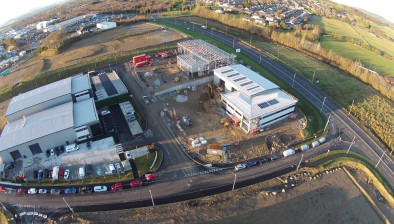Report raises fears of skills gap construction sector timebomb
 New figures published by the Office of National Statistics (ONS) have underlined fears of a skills gap timebomb in the UK construction sector.
New figures published by the Office of National Statistics (ONS) have underlined fears of a skills gap timebomb in the UK construction sector.
The report, which examined the make-up of the UK construction workforce, found clear evidence that the workforce is ageing. In the 20-year period to 2011, there was a 13% increase in the numbers of construction workers aged 45 years and over.
In particular, the report noted a clear trend of an ageing workforce among UK-born construction workers, with one in five UK-born workers expected to reach retirement age by 2021.
The ONS report also notes the UK’s reliance on migrant labour, particularly from the EU, underlining concerns around the sustainable supply of skilled labour post-Brexit.
Of the 2.2 million people working in the UK construction industry, around 165,000 people (7.5 per cent) are EU nationals. Of these, almost half (49%) are from Poland, Lithuania, Czech Republic, Hungary, Slovakia, Slovenia, Estonia or Latvia while a further 29% are from Romania or Bulgaria.
In London, the proportion of overseas workers is even higher, with 28% of construction workers hailing from the EU, while 7% are non-EU nationals.

Commenting on the new figures, Kelly Boorman, head of construction at RSM, said: “With an ageing workforce approaching retirement, there are legitimate concerns that the next generation of leaders are not yet ready to take their place.
“Anecdotal evidence also suggests that employers are already finding it harder to attract and retain staff. While the position regarding the status of EU citizens currently living and working in the UK is becoming clearer, the longer term uncertainty could be dissuading EU citizens from seeking work in the UK.
“The risk is most acute in London where one third of workers are from overseas. For UK construction firms, finding a sustainable long-term solution to the talent crisis should be top of the list of priorities.”
The options open to construction firms to try and plug the skills gap include:























